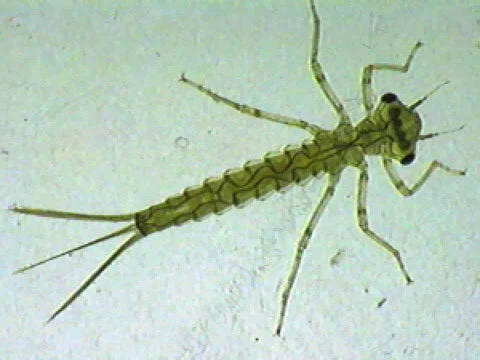Damselfly
Source: Discover Wildlife
See how they move!
SCIENTIFIC NAME: Zygoptera
Diet/Feeding
Damselfly nymphs are predatory, feeding on aquatic insects.
They capture prey by using a modified lower lip (called a labium) that shoots out rapidly and seizes the prey item.
As adults they prey mainly on insects, small crustaceans, and fish, capturing their prey during flight using hind legs covered in hair.
Adults are able to devour their prey while holding it in their legs as they fly.
Habitat
Damselfly nymphs are aquatic, and live on the bottoms of freshwater habitats such as in streams, ponds, lakes, wetlands, and rivers.
They are not good swimmers so are likely to be found sitting on aquatic vegetation, or climbing on plants or rocks in stream areas in water that is still or slow-moving.
As adults, damselflies are terrestrial but are likely to be spotted near the water.
DAMSELFLY: INTERESTING FACTS
Many species are now 7-8 cm long, however some extinct forms are nearly a meter in length!
Dragonflies hold their wings horizontally at rest, while most damselflies hold their wings together above the body.
Dragonflies respire not only through their gills, but also through their wing pads.
A distinction can be made between dragonfly and damselfly larvae but looking at the abdomen. While dragonflies have an abdomen ending in five points, Damselfly larvae have abdomens ending in 3 leaf-like gills, which are fragile and sometimes broken off or lost.
The long tail-like structures at the end of the damselfly's abdomen are gills that are used to obtain oxygen from the water.
Life Cycle
Dragonflies go through incomplete metamorphosis: passing through the egg, nymph and adult stages. The life cycle of a damselfly last one year, spent mostly in the aquatic nymph stage.
Eggs
The female lays the eggs in plant tissue, either submerged in the water, just above the water line, or directly on the water.
Nymphs
Upon hatching, nymphs go through approximately 10 to 12 immature stages (called instars) during development, depending on habitat and species.
When they are ready to become adults, they crawl out of the water and shed their exoskeleton (called 'moulting') one last time to transform into adults.
Adults
Adult damselflies emerge throughout the spring, summer, and fall.
To find a mate, adult male damselflies patrol shoreline areas seeking out females while chasing away other males.
In order to mate, a male damselfly will grasp a female that enters his territory, and sperm is transferred to the female.
Mating pairs can be seen flying in tandem (attached to each other).
Depending on the species, the male may continue to grasp the female after egg fertilization. He does this to ensure that no other males can mate with the female while she is on her way to deposit the eggs.
Adults have a lifespan of only a few weeks to a few months.
Sources
Brusca, R. C, and Brusca, G. J., 2003. Invertebrates, 2nd ed. Sinauer Associates, Inc., Publishers, Massachusetts. Page 596.
Canada's Aquatic Environments (2002). Odonata. Available here.
DMI International Corporation (2003). LaMotte Aquatic Macroinvertebrate Insect Identification Flashcards.
Dragonfly Monitoring Network (2005). Dragonfly Monitoring Guidelines For the Chicago Region. Available here.
Guide to Aquatic Invertebrates of the Upper Midwest (2004). Odonata. Available here.
University of Georgia (2010). Zygoptera. Available here.
Discover Wildlife (2015). Understanding Mating Dragonfly Behaviour. Available here.





